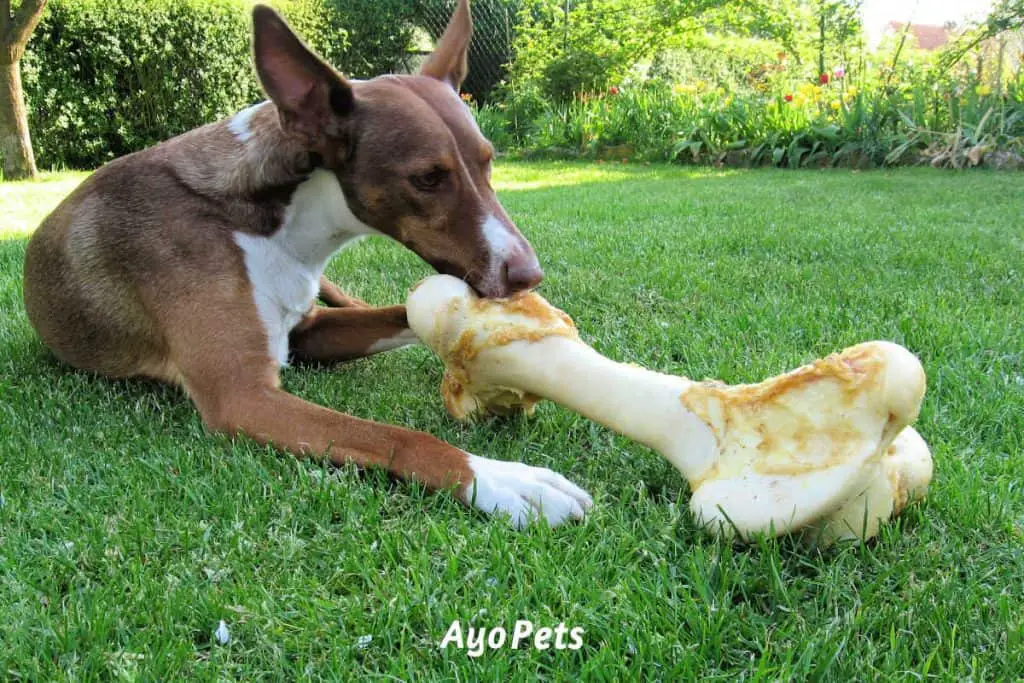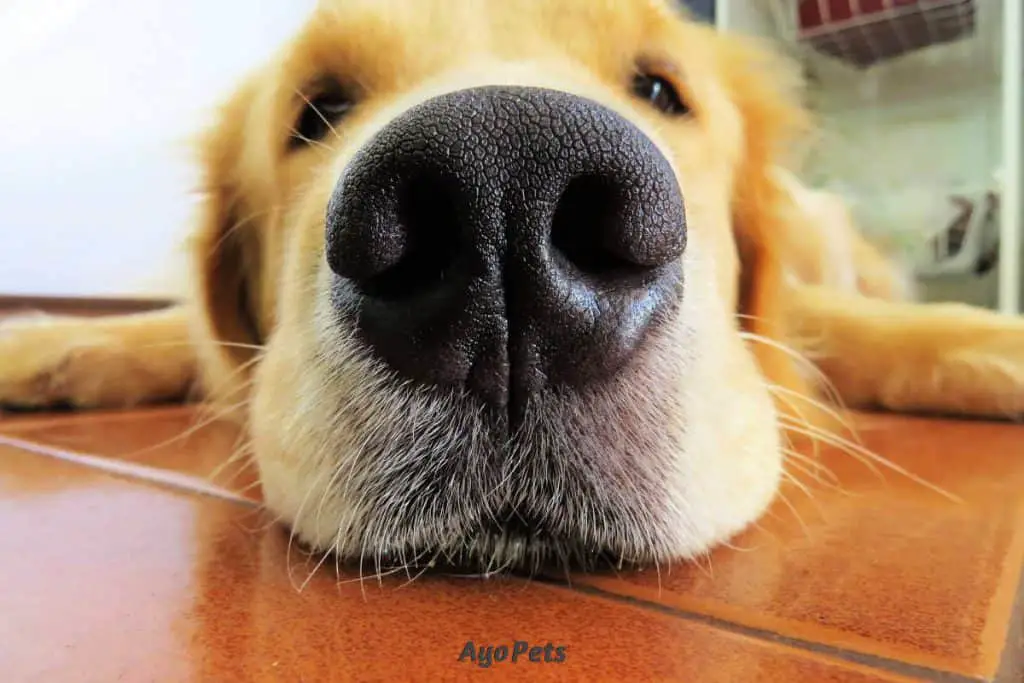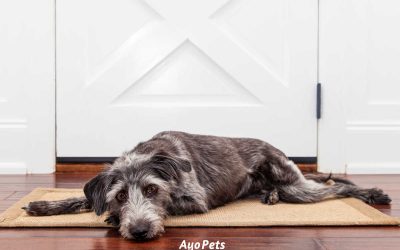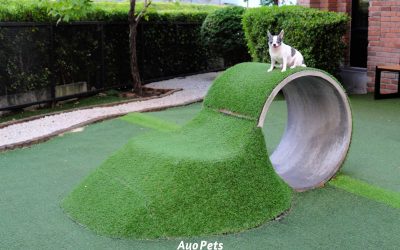If your dog likes to bury bones and dig them up days or weeks later, you might be wondering if your dog can remember where the bones are hidden or if these bones are just lucky finds.
I did some ‘digging’ of my own and it turns out that:
Dogs do remember where they bury bones. Dogs use 2 types of memory to find their buried bones: spatial and associative. The first helps dogs remember where things are and where they left them, while the second helps dogs recognize sights and smells in the area that are linked with the experience of burying the bone.
Dogs have an amazing ability to make memories, but not always in the same way you and I do and not always for the same reason either.
In the wild, dogs often bury food so that other dogs don’t eat it as a way to survive. But dogs have had to develop ways to find this food later – there’s no point burying food if you can’t find it again.
Well, researchers are only beginning to uncover the remarkable ways in which dogs remember where they bury things, such as bones, and how they choose what to dig up.
Let’s explore the wonderful world of a dog’s memory!
Recommended Products In This Post (Affiliate Links):
Inside of a Dog: What Dogs See, Smell, and Know

How dogs remember where they bury bones
Dogs use spatial memory and associative memory to remember where their bones are hidden. Let’s find out how each type of memory helps a dog find its buried treasures…
Spatial memory
A dog’s brain uses spatial memory to build a map of its home and the places it visits. This spatial memory helps the dog remember things like where its bed is, where the food and water bowls are, and where the neighbor’s cat sits on the wall.
It’s this spatial memory that helps a dog remember ‘good’ places and ‘bad’ places.
In dog terms, examples of ‘good places’ are places where food is, where there are humans to cuddle, and where there’s a cat to bark at.
‘Bad places’ could be the vet’s rooms or the tub for bubbly doggy baths.
Research has shown that spatial memory also helps animals remember where they hide food (‘good places’) and even what type of food is hidden there. This means that dogs can probably remember where they bury things and what was buried there – not just bones.
Now let’s take it one step further.
When dogs decide to dig something up, they may very well decide to dig up the tastiest treat in the yard and leave the not-so-tasty ones for later (or a famine). Studies have shown that animals with spatial memory can choose when to retrieve hidden food, and they are more likely to retrieve the food they enjoy most first.
And what dog doesn’t love a tasty old bone full of dirt, such as these natural marrow-filled bones or these free range meaty rib bones on Amazon?
So, if your dog has hidden several things in the backyard, he/she is likely to use spatial memory to remember where the treats are and what treats are buried where. Your dog will probably also dig up its favorite treats first, such as bones, leaving other buried treats for later or never.
Associative memory
Dogs don’t have a great memory when it comes to remembering when things happen or random unimportant events, such as the day-to-day happenings at home.
In fact, National Geographic did a study on memory and found that dogs usually forget unexciting events within 2 minutes.
So, a dog won’t remember that your phone rang this morning or when you last took him for a walk. But how does he know you’re going walking when you take out a certain pair of sneakers?
Because he associates your sneakers with the experience of a walk.
This is called ‘associative memory’. Just as spatial memory helps dogs remember ‘good’ and ‘bad’ places, associative memory helps dogs recognize ‘good’, ‘neutral’, and ‘bad’ experiences.
And how do dogs experience the world? With their senses.
Dogs see or feel objects, taste things, hear sounds, and smell a lot. Most things are pretty boring and go into the ‘neutral’ category without much reaction, such as singing birds or a dog movie playing on the TV.
But if the object, food, or sound is new or unfamiliar, the dog will stop to take in the experience and associate it with being ‘good’, ‘bad’, or ‘neutral’.
‘Good’ is something the dog enjoys and wants more of.
‘Neutral’ is nothing to worry about and the dog will know to ignore it in future.
‘Bad’ is something the dog doesn’t want to experience again, if it can be avoided.
For example, if a dog eats a lemon and it tastes bad or he gets sick, the dog associates the smell, taste and look of a lemon with a ‘bad’ experience and he won’t go near another lemon. Lemons are now part of the dog’s associative memory. (Lemons are on the list of fruits dogs should never eat.)
The dog can’t tell you when it first ate a lemon or why, it just knows to stay away from anything that looks, tastes, or smells like a lemon.
These associations are one way dogs remember things, and this ability helps dogs remember where they bury bones!
When a dog buries a bone, it associates the sight and smell of the area with the bone. This is memorized as a ‘good’ experience.
Seeing the area or smelling it again is likely to trigger the associated memory of the buried bone, so the dog can dig it up again and enjoy it.
Sometimes dogs just smell a bone

Sometimes a dog doesn’t ‘remember’ where a bone is hidden. Sometimes a dog just uses its amazing sense of smell to discover and sniff out a bone hidden in the soil.
Alexandra Horowitz, author of Inside of a Dog: What Dogs See, Smell, and Know and Being a Dog: Following the Dog Into a World of Smell, makes it easy to understand how amazing a dog’s sense of smell is when she compares a human’s to a dog’s:
We can taste a teaspoon of sugar in a cup of coffee sure. But a dog can identify that same teaspoon of sugar in 1 million gallons of water (or two Olympic swimming pools).
If a dog can detect a teaspoon of sugar in 1 million gallons of water, it can smell a dirty bone under some dirt. Certain dog breeds can smell objects as deep as 15 feet underground, and help police locate and recover buried bodies of bones.
If your dog runs into the house with a sandy bone, he/she either buried the bone in the backyard and simply forgot about it until now, or your dog sniffed it out from where another dog buried it once upon a time.
But in the dog world, when it comes to buried bones, it’s finders keepers, losers weepers.
-> If you choose to feed bones to your dog, be sure to keep an eye on your dog and take the bone away before it gets small enough to be swallowed and stuck in your dog’s digestive tract.






